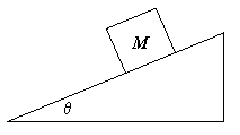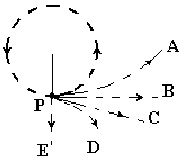- (A) The objects experience the same force and have the same acceleration.
- (B) The objects experience different forces and have the same acceleration.
- (C) The objects experience the same force and have different accelerations.
- (D) The objects experience different forces and have different accelerations.
- (E) The acceleration of the objects is 0.
- (A) 0
- (B) ½ mg
- (C) mg
- (D) 3mg/2
- (E) dependent on other factors
 | (A) g sin(theta) (B) Mg cos(theta) (C) Mg sin(theta) (D) Mg (E) 0 |
- (A) is directly proportional to the mass of the box.
- (B) is inversely proportional to the mass of the box.
- (C) is proportional to the square of the mass of the box.
- (D) is proportional to the square root of the mass of the box.
- (E) does not depend on the mass of the box.
- (A) the elevator is at rest;
- (B) the elevator is accelerating upward;
- (C) the elevator is accelerating downward;
- (D) the elevator is in free fall;
- (E) the elevator is moving upward and decelerating.
 | . |
- (A) The orbital speed is determined by applying Newton's 2nd law to the satellite motion.
- (B) The orbital speed depends on the radius of the orbit.
- (C) The orbital speed depends on the satellite's height above the planet's surface.
- (D) The orbital speed depends on the mass of the planet.
- (E) The orbital speed depends on the mass of the satellite.
- (A) The gravitational potential energy of the crate is increasing.
- (B) The net work done by all the forces acting on the crate is zero.
- (C) The work done on the crate by the normal force of the plane is zero.
- (D) The work done on the crate by gravity is zero.
- (E) The woman does positive work in pulling the crate up the incline.
- (A) The lighter one has one fourth as much kinetic energy as the other.
- (B) The lighter one has one half as much kinetic energy as the other.
- (C) The lighter one has the same kinetic energy as the other.
- (D) The lighter one has twice as much kinetic energy as the other.
- (E) The lighter one has four times as much kinetic energy as the other.
- (A) speed of Block 1 > speed of Block 2.
- (B) speed of Block 1 = speed of Block 2.
- (C) speed of Block 1 < speed of Block 2.
- (D) no statement can be made regarding the comparison of the blocks' speeds without knowing the angle of the incline.
- (E) no statement can be made regarding the comparision of the blocks' speeds without knowing the value of h.